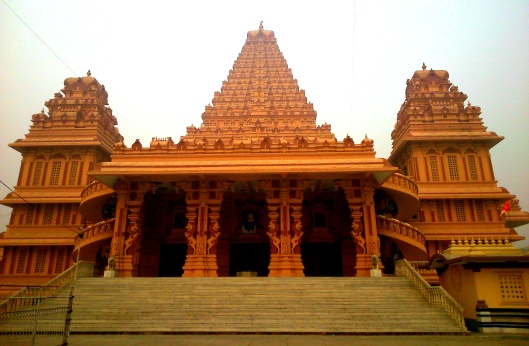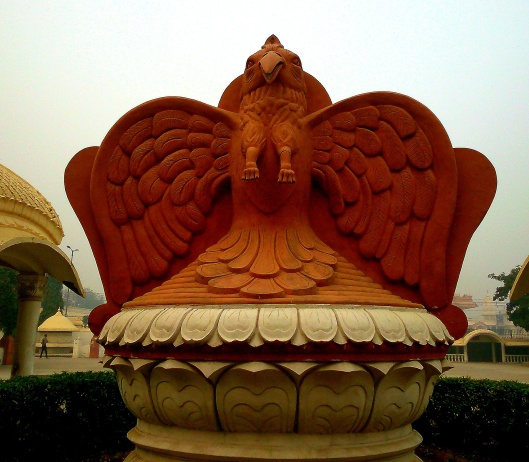Delhi has no dearth of surprises for its admirers and its keeps on presenting with new ones every time. It has so much to offer with so much diversity that the “bucket list” of its admirers continues to get stretched with each visit.
This time, I had a chance to visit the massive temple complex of the famous Shri Adhya Katyani Shakti Peeth Mandir. Most of us would get puzzled by the name as it might be unheard but I am very confident that everyone must have heard of “Chattarpur Mandir” (also a metro station on the yellow line).
I have seen the temple complex countless times while going towards Gurgaon from metro and also bowed my head before the almighty from the metro itself (most of the Indians do the same while passing by any holy place).

Outer view of Katyani Temple

Goddess Katyani Temple
However, for a change this time, I moved out of the metro to visit this temple complex in reality and get acquainted with its history. I am well aware that everything pertaining to Chattarpur Mandur is readily available on the internet but I strongly believe that going to a place and having the first-hand experience is all together a different feeling which is incomparable.

Laxmi Vinayak Mandir
The temple complex is spread across an area of 80 acres and often frequented by number of visitors including foreign tourist every day. The temple was established in 1974 by Shri Durga-Charana-Uragi Baba Nagpal Ji who was a famous saint and worked for various social causes throughout his life. Initially, the temple of goddess Katyani who is among the nine avatars of Durga was built and later on temples of other deities were added at different intervals.

A sculpture depicting one of the characters of Ramayana
The temple and its complex offers a unique amalgamation of structural design of temples from all corners of India and witness a sea of devotees during festivals especially during the Navratras. The main attractions of complex apart from temple of goddess Katyani are Laxmi Vinayak Mandir (famous for its elegant structural design which is also visible from metro), 101 feet giant Hanuman Statue, a tall Lord Shiva’s trident (Trishul), and the mausoleum of Baba Sant Nagapal.


Chariot on which goddess is taken during festivals and Navratras

Lord Shiva’s Trident (Trishul)
The complex also has a museum dedicated to Baba Sant Nagpal who died in 1988. It has a hyper realistic sculpture of Baba Nagpal which is simply awesome and make everybody feel as if Baba is sitting right in front of us. The museum mainly encompasses all the itinerary from clothes to medical equipment (even his hairs) used by him during his lifetime.

A Hyper Realistic Sculpture of Baba Nagal

Museum displaying Baba’s cloth
Another interesting fact about the temples complex is that it has a fully fledged rain water harvesting system in its complex area to store the rain water and contribute towards the sustainable development environment.

Baba Nagpal Samadhi

I really had a good time wandering in the large temple complex from one point to another and truly enjoyed it ambiance.

Kaushal Mathpal is an Advocate practicing in Delhi Courts in India but also has a flair for travelling. When he’s not in a courtroom, he enjoys exploring various parts of India and the surrounding region. He also writes on his blog http://rediscoveryourdreams.wordpress.com/ and you can follow him on Twitter @KaushalMathpal.








